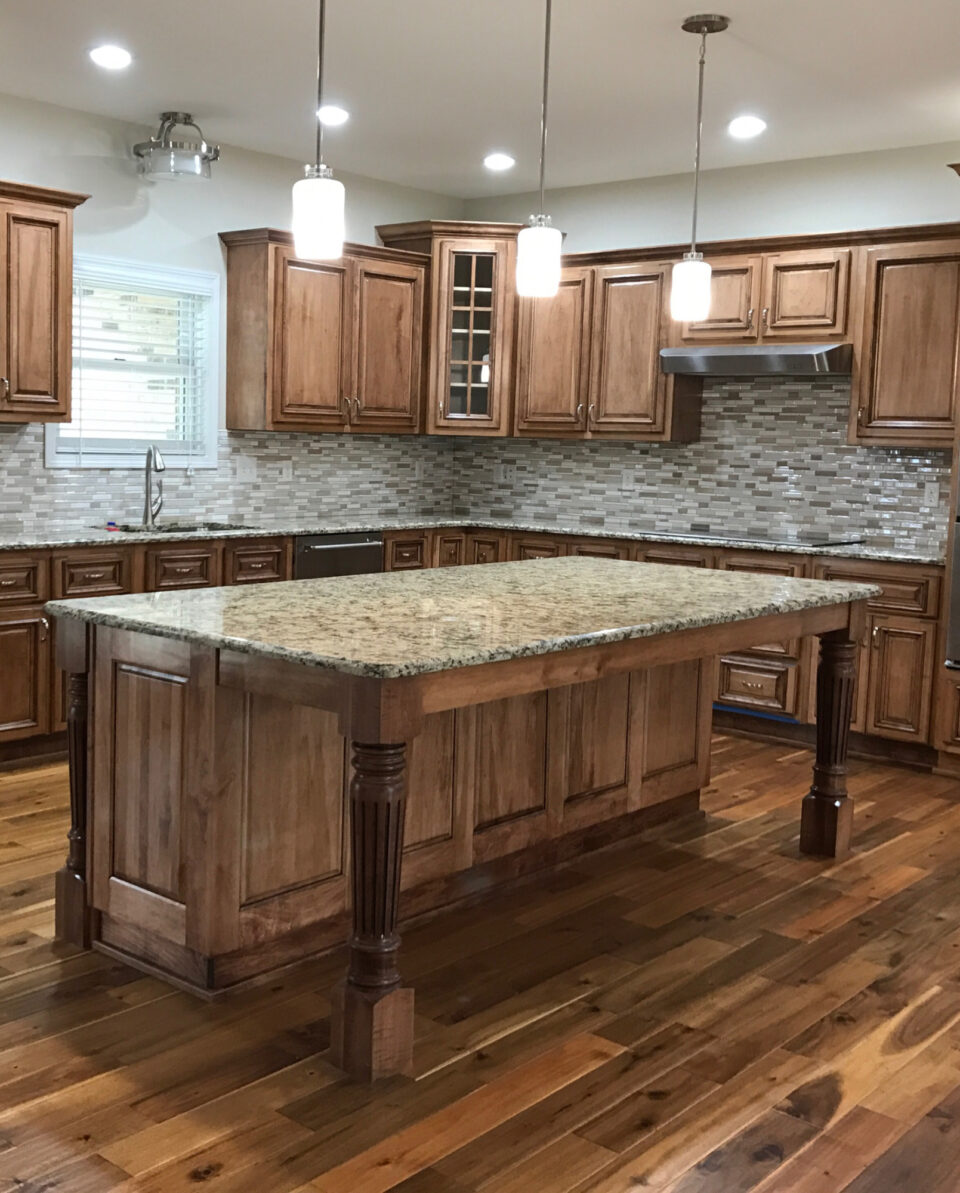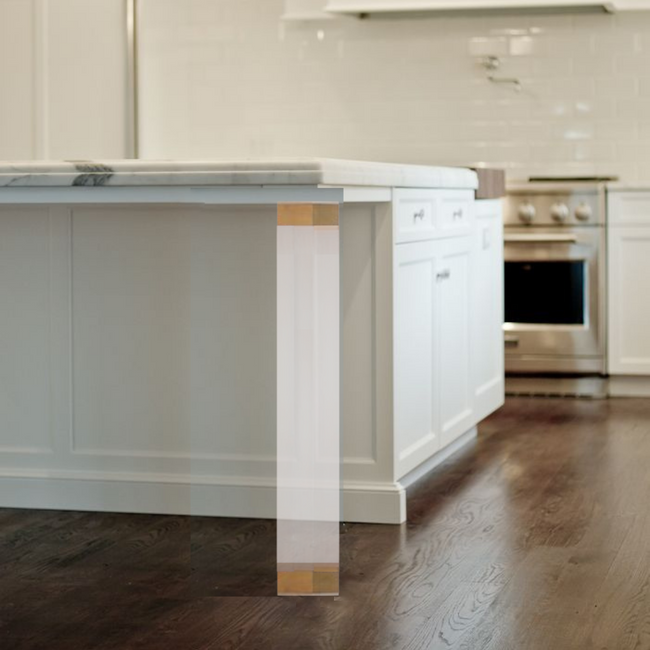The Most Effective Kitchen Island Leg Options for Modern and Standard Kitchens
The Most Effective Kitchen Island Leg Options for Modern and Standard Kitchens
Blog Article
The Relevance of a Sturdy Kitchen Island Leg in Developing a Practical Food Preparation Location
A strong kitchen area island leg offers as a fundamental element in developing a functional cooking environment, supplying needed support for both the counter top and numerous cooking area tasks. As kitchen areas evolve into multifunctional areas for food preparation, eating, and interacting socially, the selection of materials and design factors to consider for island legs comes to be increasingly vital.
Benefits of Sturdy Island Legs
Providing crucial assistance, durable kitchen island legs play an essential duty in improving the functionality and sturdiness of kitchen area islands - kitchen island leg. These legs not just birth the weight of the countertop and any added things put on the island, but also contribute to the overall security of the structure. A well-supported kitchen area island guarantees that it continues to be upright and useful, even under heavy use, which is particularly important in hectic cooking area atmospheres
In addition, durable island legs can enhance the visual allure of the kitchen. They give a solid framework that can enhance various layout styles, from contemporary to traditional. This convenience allows house owners to tailor their kitchen area islands according to personal taste while guaranteeing that the architectural honesty remains uncompromised.
In addition to their helpful duty, robust kitchen island legs can likewise boost safety and security. A stable island minimizes the threat of accidents triggered by wobbling or tipping, which is particularly important in houses with children or elderly individuals. Solid legs can facilitate a smooth circulation of tasks, enabling for efficient meal preparation and social interactions within the kitchen area room. Eventually, buying strong kitchen area island legs is essential for a useful and visually pleasing cooking location.
Materials for Kitchen Area Island Legs
When selecting materials for cooking area island legs, durability and visual charm are vital elements to take into consideration,. One of the most usual products include hardwood, steel, and crafted timber, each offering distinct advantages.
Wood, such as oak, cherry, or maple, is a traditional option as a result of its strength and timeless elegance (kitchen island leg). It can withstand substantial weight and is resistant to put on, making it suitable for high-use kitchen environments. Furthermore, hardwood can be discolored or painted to match various kitchen area styles
Metal legs, typically crafted from stainless steel or wrought iron, provide a commercial and contemporary look. They are exceptionally solid and can support considerable lots while being resistant to wetness and warm, which is useful in a cooking area. Steel legs can additionally be quickly cleansed, improving their practicality.

Style Factors To Consider for Stability
The choice of materials for kitchen island legs directly affects the style factors to consider for security. When creating a kitchen area island, it is critical to evaluate the weight-bearing capability of the picked materials. Heavier materials, such as strong wood or steel, commonly give better stability, especially under the stress of day-to-day usage.
Furthermore, the leg layout should include appropriate geometry to boost stability. A broader base increases the support location, reducing the risk of tottering or tipping. Factor to consider ought to likewise be offered to the height of the legs; out of proportion leg lengths can bring about imbalance, jeopardizing the general security of the island.
Furthermore, the distribution of weight across the island is vital. Guaranteeing that the leg placement aligns with the heaviest components, such as kitchen counters and home appliances, will additionally boost stability.
Maintenance Tips for Durability

Depending on the material of the legs-- whether timber, metal, or composite-- suitable cleaning methods ought to be utilized. Steel legs may need a light polish to stop corrosion and preserve their luster.
Additionally, tightening screws and screws frequently can ensure security and protect against tottering. Think about strengthening the legs with extra brackets or supports to improve sturdiness if the cooking area island experiences hefty usage. Using a safety surface or sealer can safeguard versus wetness and stains, prolonging the life-span of the legs. By adhering to these maintenance tips, property owners can ensure their cooking area island legs remain durable and practical for several years to find.
Selecting the Right Leg Style
Regular maintenance guarantees that kitchen area island legs stay strong and useful, yet choosing the ideal leg design is similarly crucial for both aesthetic appeals and assistance. The option of leg style can substantially affect the overall design and consistency of your kitchen.

Functionality is another crucial aspect. For instance, thicker legs or those with a sturdy base can sustain larger counter tops and tools, enhancing the island's utility. On the other hand, slim legs may create an airy look, suitable for lighter styles however possibly less supportive.
Conclusion
In summary, the importance of strong kitchen area island legs can not be overemphasized in the development of a practical cooking area. These legs provide vital support, enhance stability, and add to the general aesthetic of the kitchen. By thoroughly choosing proper materials and designs, in addition to implementing appropriate next maintenance methods, the durability and performance of kitchen area islands can be made sure. Ultimately, buying durable island legs is essential to attaining a secure and reliable cooking setting.
A tough kitchen area island leg serves as a basic element in developing a practical cooking setting, offering necessary assistance for both the countertop and various cooking area activities.Providing essential assistance, strong kitchen island legs play an essential role in enhancing the capability and toughness of cooking area islands. Eventually, spending in strong kitchen island legs is crucial for a functional and visually pleasing cooking area.
Factor to consider should additionally be offered to the height of the legs; out of proportion leg sizes can lead to imbalance, jeopardizing the overall security of the island.
Wooden legs offer heat and a timeless look, while metal legs supply a commercial and modern feel.
Report this page